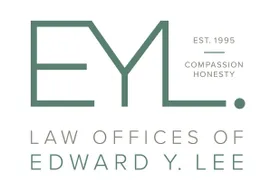The Impact Of Vehicle Technology On Accident Severity

As our vehicles become increasingly equipped with cutting-edge technology, the potential for reducing the severity of car accidents has significantly risen. Innovations such as automatic braking systems, lane departure warnings, and electronic stability control are not just conveniences—they are transforming how we approach road safety and the aftermath of traffic incidents.
Understanding Vehicle Safety Technologies
One of the most notable advancements in recent years is the proliferation of active safety features. These technologies actively prevent accidents by either taking control of the vehicle or by alerting the driver to potential hazards. For example, automatic emergency braking (AEB) systems detect an imminent collision and can engage the brakes if the driver fails to respond in time. Similarly, lane keeping assists help maintain the vehicle’s position within the lane markings on the road, addressing common causes of side-swiping and rollover accidents.
These advancements are significant because they address human errors, which are the leading cause of motor vehicle accidents. By minimizing these errors, the severity of accidents can be greatly reduced, leading to fewer injuries and fatalities.
Legal Perspectives On Safety Technologies
From a legal standpoint, the integration of advanced safety technologies in vehicles is creating new considerations for liability and responsibility in the event of an accident. Attorneys can attest to the shifting landscape in automotive accident claims, where these technologies are often at the forefront.
When accidents occur, the presence of safety technologies can complicate liability issues. For instance, if a vehicle equipped with crash avoidance technology still ends up in an accident, the question arises: did the technology fail, or was there negligence on part of the driver or another party? This is where the role of a car accident lawyer becomes crucial. They must understand both the legal and technological contexts to effectively represent their clients.
The Benefits Of Safety Technologies
The benefits of vehicle safety technologies extend beyond reducing the likelihood of crashes. They also mitigate the impact when accidents do occur, which can be a critical factor in personal injury claims. Technologies like crumple zones, improved airbag systems, and more robust vehicle frames protect occupants by absorbing and redistributing crash forces more effectively than ever before.
Additionally, insurance companies are increasingly recognizing the value of these technologies. Vehicles equipped with advanced safety features often qualify for lower insurance premiums, reflecting the decreased risk of serious accidents and injuries. This not only makes these vehicles more attractive to consumers but also promotes a broader adoption of safety technologies.
Looking Forward
As technology continues to advance, the role of vehicle safety features in legal contexts will undoubtedly evolve. The ongoing development of autonomous vehicles and further enhancements in driver-assistance systems will continue to shape discussions on liability and safety standards. For legal professionals and their clients, staying informed about these developments is essential for addressing legal claims effectively and ensuring that all parties are fairly represented.
Our friends at Rasmussen & Miner discuss these topics regularly, providing insights into how evolving vehicle technologies are influencing legal practices related to car accidents. As we look towards a future with fewer road fatalities and serious injuries, the importance of these technologies cannot be overstated. The legal community, alongside engineers and manufacturers, plays a crucial role in this transition, advocating for the incorporation of effective safety measures that protect all road users.
Note: The information provided in this blog post about injury car accidents in Los Angeles is for general informational purposes only and should not be considered legal advice.
Disclaimer: No attorney-client relationship is established by accessing or using this information. Readers should consult with a qualified attorney for advice specific to their situation. The authors make no representations regarding the accuracy or suitability of the information provided and disclaim any liability for reliance on it. Laws and regulations may vary and are subject to change.



